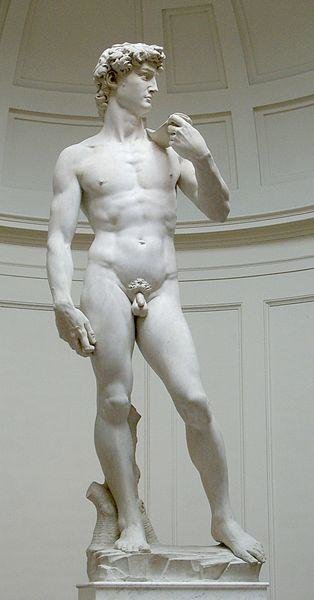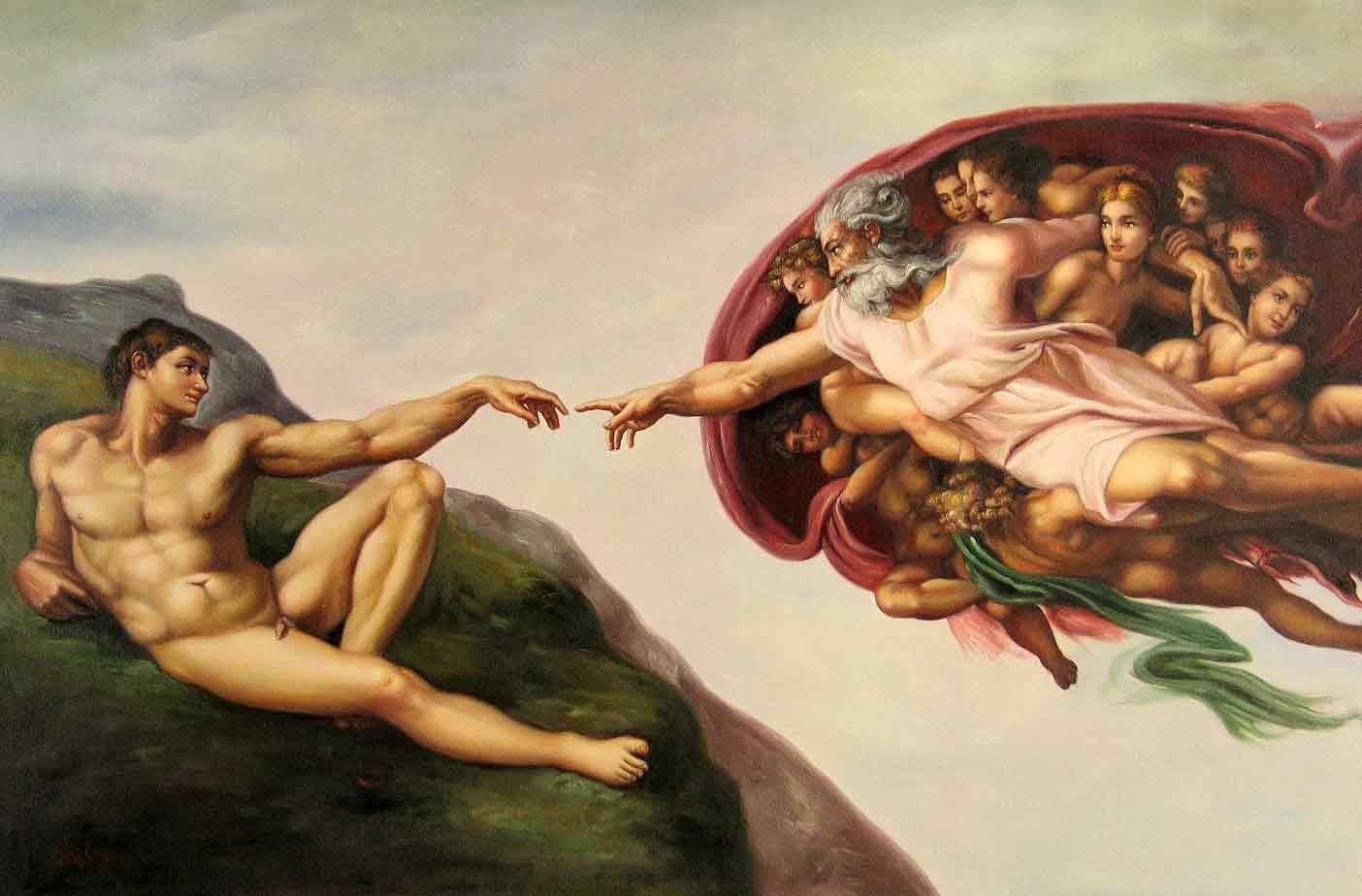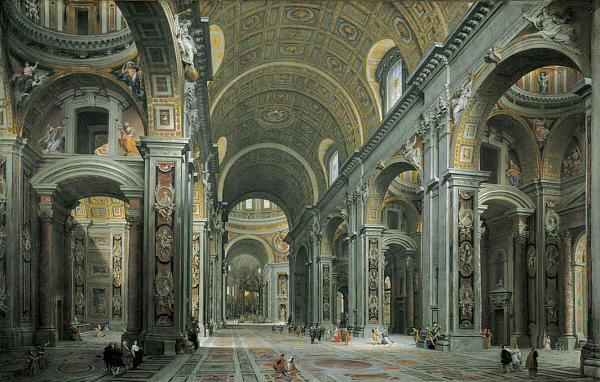Background information of the artist
Michelangelo Buonarroti Simoni was an Italian sculptor, an architect, a poet, a painter, and an engineer who had a massive impact on Western arts developments in the 16th century. He was born in 1475 in Caprese, but both parents were from Florence where he was raised as a child (Müntz, 2011). His interest in arts, especially as a sculptor was developed after the death of his mother when he was only six years.
He went to live with a stonecutter in the town of Settignano near his father’s marble quarry. He was taken to school in Florence but he had no interest in schooling, preferring to develop his skills in art. Upon realizing his skills, the town council helped him advance his career because art was very popular during this period. He became a renowned apprentice at only thirteen years.
His works has been considered as some of the best pieces of sculptures even in the contemporary society. He also made a massive contribution in the field of painting, architecture, and poetry. Given the prevailing political condition during that time, he used his skills to pass political messages to the people of Florence, his hometown. He died in 1564 at the age of 88 years.
David’s sculpture
Michelangelo’s David sculpture is one of his most popular sculptures not only during those early times, but also today. During that time, most of the artists would curve the sculpture of David standing over Goliath. This was an easier way of making the sculpture understandable to the audience. However, Michelangelo had a different idea when he developed David’s sculpture. The figure below shows Michelangelo’s David sculpture.

Source (Castex, 2008)
As demonstrated in this sculpture, it is difficult for one to guess that this is David’s sculpture. The sculpture would pass as of any handsome young man. It would be interesting to know why he chose this approach.
According to Castex (2008), for one to understand the reason why Michelangelo chose to sculpture David in this manner, it would be important to understand the prevailing political environment in Florence and the message that he was passing across to his audience. During this time, empires that were more powerful surrounded City of Florence, the hometown of Michelangelo.
People of this city feared a possible attack from any of the neighboring cities, which were perceived as stronger than Florence. The sculpture of David was erected at the center of this city, purposely to pass a message. Other artists preferred to give a sculpture of David in a different way.
Michelangelo had a different idea. He sculptured David before the fight. In his sculpture, David is seen as a young warrior who has a strong will to fight despite the obvious physical strength of the enemy. This was meant to assure people of Florence city that despite the apparent strength of the enemies, this city had the capacity to win as long as it had the willpower.
The sculpture also emphasized on tact other than physical strength as a way of winning a battle. Notice that David in this sculpture held his weapon (the sling) in a manner that the enemies could not detect that he was armed. This made the enemy underrate his capacity, a fact that must have facilitated David’s victory. It is also important to notice the kind of confidence in the face of David in this sculpture.
Müntz (2011) says that the sculpture portrays David as a young worrier who is calm despite the danger he is facing by fighting Goliath. The face of Michelangelo portrays no form of fear or worries despite the danger he is facing. This was a message to the seemingly weaker forces of Florence City that they had the capacity to win any battle in case the outside forces attacked them.
Michelangelo’s creation of Adam painting
The creation of Adam is another masterpiece painting done by Michelangelo as one of the many works of art he did during his career. This piece of art has received massive attention in the world over, both in the past and in the current society. Although Michelangelo did not consider himself much of a painter, this painting has been considered as one of the best during his time. The figure below shows a painting of the creation of Adam.

Source (Crispino, 2009)
According to Chapman (2006), there have been attempts to explain the process of creation of Adam and the people involved as told in the holy books. In his painting, Michelangelo gives the impression of a panel that was involved in the creation of Adam, led by God. It is important to note some few facts about this painting. A careful analysis of this painting shows that the panel surrounding God are women.
This is so because there has been a general perception that angels are women. In this painting, it is apparent that the angels gave a helping hand in the creation of Adam (Crispino, 2009). This is further demonstrated by the fact that the attention of the entire panel is fully on Adam. It is also important to note that the hand of God is not in contact with the hand of Adam.
This could be supporting the theory that God created Adam, not through physical molding, but through word. Then he gave him life. The stretched hand of God could therefore, be assumed to be giving life to Adam. Lastly, it is important to note that Adam is placed on some kind of a hill while God and his angels are on air in some kind of a flying chariot of fire.
According to Zöllner (2010), ancient artists struggled to give their explanation about the creation of the first man in different ways. However, their explanations were massively influenced by the teachings from the holy books.
This could be what influenced Michelangelo when making this painting. The image also shows that God and his panel are in motion after creating Adam. It is also noticeably that Adam was created alone and left on this vast land.
Michelangelo’s piece of architecture in St Peters’ thesis sculpture
Michelangelo has remained famous several centuries after his death not only because of his sculptures and paintings but also because of his architectural prowess. He is one of the architectures who were involved in designing and construction of St. Peters’. Below is a picture of the interiors of this church.

Source (Castex, 2008)
Castex (2008) says, “St. Peter’s is the most renowned work of Renaissance architecture and remains one of the largest churches in the world.” Michelangelo was made chief architect of St. Peters Basilica in Rome in 1546. He was persuaded by the leadership of the church to take this position in order to help in designing the church.
The church’s leadership at St. Peters Basilica was convinced that Michelangelo was the right person to do this job because successive architects had failed to bring up the church. The plans for construction of the church had been underway for almost 100 years, but little effort had been made to design and put up the church.
Given his experience and prowess in artistry, the leaders of St. Peters Basilica were convinced that Michelangelo had the capacity to do this work successfully. They were right. According to Müntz (2011), upon assuming office as the chief architect of this church, he reviewed works that had been done by predecessors.
He soon came up with the plan for the church. This scholar says that Michelangelo has been credited for having come up with the design for the dome of this church. The work of construction was begun as soon as he was done with the design.
Although he never lived to see the final masterpiece upon its completion as he envisioned it during its design, the church has been considered as one of the greatest pieces of arts. It remains one of the largest churches in the world and probably the holiest church in Rome. Christians have considered it as a special church, especially due to its ambiance.
Michelangelo considered himself more of a sculptor than any other professions he demonstrated his prowess in during his career. His paintings and architectural works remain very popular, but according to his own analysis, he was a sculptor. However, many scholars have considered him a sculptor, an architect, a painter, an engineer and a poet. His works, some of which are given above, demonstrates this prowess in these fields.
References
Castex, J. (2008). Architecture of Italy. Westport: Greenwood Press.
Chapman, H. (2006). Michelangelo. New Haven: Yale University Press.
Crispino, E. (2009). Michelangelo. Firenze: Giunti.
Müntz, E. (2011). Michelangelo. New York: Parkstone International.
Müntz, E. (2011). Michelangelo. New York: Parkstone International.
Zöllner, F. (2010). Michelangelo, 1475-1564: Life and work. Köln: Taschen.